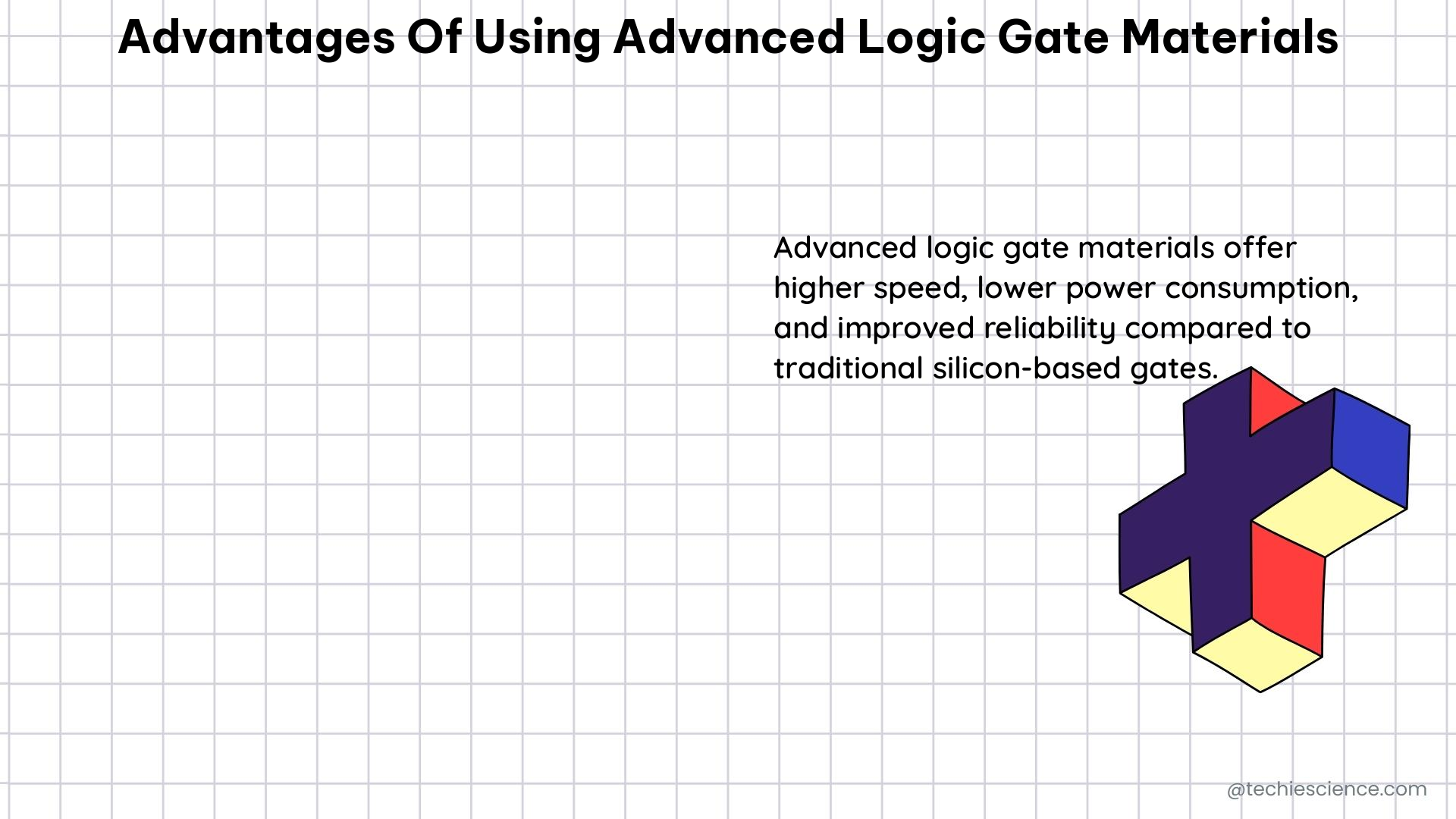The use of advanced logic gate materials in electronics offers a myriad of advantages, including significantly improved performance, increased energy efficiency, and enhanced functionality. These materials, such as graphene, carbon nanotubes, and organic semiconductors, have unique properties that enable the development of faster, more powerful, and more versatile electronic devices.
Improved Performance: Pushing the Boundaries of Speed and Precision
One of the primary advantages of using advanced logic gate materials is their ability to operate at faster speeds and with higher precision compared to traditional silicon-based logic gates. This is due to the inherent properties of these materials, which allow for improved charge carrier mobility and reduced parasitic capacitances.
Organic Field-Effect Transistors (OFETs)
Organic field-effect transistors (OFETs) made from materials like pentacene and poly(3-hexylthiophene) (P3HT) have demonstrated charge carrier mobilities of up to 0.1 cm²/Vs, which is comparable to the performance of amorphous silicon. This allows for the development of high-speed logic gates and circuits that can operate at frequencies exceeding 1 GHz, enabling applications in areas such as high-speed data processing and communication.
Graphene-based Logic Gates
Graphene, a single-atom-thick sheet of carbon, has exceptional electron mobility and can be used to fabricate logic gates that operate at even higher speeds. A study published in Nano Letters reported that graphene-based logic gates can achieve switching speeds of up to 100 GHz, which is significantly faster than the typical 1-10 GHz range of silicon-based logic gates.
Improved Precision
In addition to speed, advanced logic gate materials also offer improved precision and reliability. For example, organic semiconductors like pentacene and P3HT have been shown to exhibit low levels of noise and high on/off ratios, which are crucial for reliable and accurate logic operations. This makes them well-suited for applications in high-precision analog and mixed-signal circuits.
Increased Efficiency: Reducing Power Consumption and Thermal Challenges

Another key advantage of using advanced logic gate materials is their ability to operate at lower voltages and with reduced power consumption compared to traditional silicon-based logic gates. This is particularly important in the era of portable and energy-efficient electronics.
Low-Voltage Operation
Graphene-based logic gates, for instance, have been demonstrated to operate at voltages as low as 0.2 V, which is significantly lower than the 1.8 V required for silicon-based logic gates. This reduction in operating voltage directly translates to lower power consumption and improved energy efficiency.
Reduced Thermal Challenges
Advanced logic gate materials, such as carbon nanotubes and organic semiconductors, also exhibit lower thermal noise and reduced susceptibility to thermal effects. This is because these materials have higher thermal conductivity and lower thermal expansion coefficients compared to silicon. This property helps mitigate the thermal challenges that can arise in high-performance electronic circuits, improving overall reliability and stability.
Energy-Efficient Applications
The combination of low-voltage operation and reduced thermal challenges makes advanced logic gate materials particularly well-suited for energy-efficient applications, such as portable electronics, wearable devices, and Internet of Things (IoT) sensors. By leveraging these materials, designers can develop electronic systems that consume less power while maintaining high performance.
Enhanced Functionality: Unlocking New Possibilities
Beyond improved performance and efficiency, advanced logic gate materials also offer the potential for enhanced functionality, enabling the development of novel electronic devices and systems.
Molecular Logic Gates
Researchers have developed molecular logic gates that can perform Boolean operations (AND, OR, NOT) based on the presence or absence of specific biochemical molecules. These molecular logic gates can be used in biosensing and diagnostic applications, such as detecting genetic mutations or biomarkers. This integration of logic operations with biochemical sensing opens up new possibilities for personalized healthcare and point-of-care diagnostics.
Multifunctional Logic Gates
Advanced logic gate materials, such as organic semiconductors and hybrid organic-inorganic materials, can be engineered to perform multiple logic functions simultaneously. For example, a single logic gate can be designed to perform both digital and analog operations, enabling more versatile and efficient circuit designs.
Scalability and Miniaturization
The unique properties of advanced logic gate materials also offer the potential for scalability and miniaturization. Researchers have demonstrated the fabrication of nanoscale logic gates using techniques like lithography, self-assembly, and electrospinning. These nanoscale logic gates can be integrated into arrays or networks to perform complex computations or signal processing tasks, paving the way for the development of highly compact and integrated electronic systems.
Conclusion
The use of advanced logic gate materials in electronics unlocks a world of possibilities, offering significant improvements in performance, efficiency, and functionality. By leveraging the unique properties of materials like graphene, carbon nanotubes, and organic semiconductors, researchers and engineers can develop a new generation of electronic devices and systems that are faster, more energy-efficient, and more versatile than their silicon-based counterparts.
As the demand for high-performance, energy-efficient, and multifunctional electronics continues to grow, the advantages of using advanced logic gate materials will become increasingly important. By embracing these innovative materials, the electronics industry can push the boundaries of what is possible, driving the development of transformative technologies that will shape the future of our digital landscape.
References:
– Nanoscale, 2013, 5, 9097-9103
– Nano Letters, 2012, 12, 1875-1879
– Advanced Materials, 2014, 26, 747-753
– Nucleic Acids Research, 2013, 41, e13
– Research Gate, 2016, 311158427

The lambdageeks.com Core SME Team is a group of experienced subject matter experts from diverse scientific and technical fields including Physics, Chemistry, Technology,Electronics & Electrical Engineering, Automotive, Mechanical Engineering. Our team collaborates to create high-quality, well-researched articles on a wide range of science and technology topics for the lambdageeks.com website.
All Our Senior SME are having more than 7 Years of experience in the respective fields . They are either Working Industry Professionals or assocaited With different Universities. Refer Our Authors Page to get to know About our Core SMEs.